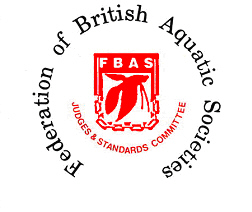



Feeding fish a varied diet is important – whilst there is a vast range of commercially available fish food (dried, freeze-dried or frozen) at aquatic stores, the urge to overfeed must be avoided at all costs.
To draw a simile, approximately 87% of the food we humans consume is used to maintain our body temperature. Nevertheless we all feed fish as if they were mammals; over feeding will not necessarily produce better fish. Resist this urge as excess and uneaten food only pollutes the water.
Where a family shares responsibility for the aquarium, make sure feeding is carried out with the knowledge of the other family members.
Many fishkeepers feed live food, such as Daphnia, Bloodworm Gnat larvae and some home-cultured worm foods to their fish. This is especially beneficial when preparing fish for breeding, but take the precaution only to feed live aquatic foods that have been collected from fish-free waters to avoid introducing disease into the aquarium.
MAINTENANCE ROUTINE
The easy part of fishkeeping is starting out, but success depends on a regime of regular maintenance by the fishkeeper. Like all pet animals, fish need care - your care. If there is any doubt concerning your ability or the available time to care for the fish, then fishkeeping is not for you.
Keeping the water condition at its optimum is of paramount importance for successful Fishkeeping. Whilst well maintained filtration equipment will do its part, the simple task of replacing a portion of the water regularly will do much to keep water conditions at their best.
Do not simply 'top up' water lost by evaporation, this will NOT reduce any pollutants in the aquarium; this is only achieved by removing, and replacing with new water, at least a quarter of the aquarium water every month.
Remember all the fishes' waste material goes into the aquarium water, their living space. Their health is totally reliant on you removing it.
Siphon off water from just above gravel level so that sludge is also removed at the same time as the water. A 'gravel washer' can be most effective, removing dirt and water without the gravel!
Remove dead plant material before it decays and pollutes the water.
Keep cover glasses clean, so that all available light from the fluorescent tubes is not blocked, but reaches the plants in the tank below.
FISH HEALTH
Most of the easily recognisable fish ailments can be cured using readily available remedies from your aquatic dealer; antibiotics, if required, can only be obtained through a veterinary surgeon.
Copper-based remedies, whilst used effectively in freshwater aquariums, cannot be used to treat marine aquariums where invertebrates, such as corals etc, are present.
Learn to observe your fishes, know what their 'normal' behaviour is so that any abnormal behaviour immediately causes you to investigate and, in the process, deduce what may be wrong.
It is usual to treat the tank as a whole for simple, contagious diseases, but some fish may need isolating for separate treatment for other more individual problems.
The two best ways to avoid disease affecting your fish are:
Keep a well-maintained aquarium. Fish generally succumb to disease when stressed.
Take active precautions not to inadvertently introduce disease into the tank.
Quarantine all new fish additions for at least two weeks, inspect plants for snails' eggs and sterilize all nets after use.
DEAD OR DISEASED FISH
Never dispose of dead fish by flushing down a water closet (toilet) or burying them as both waste water and soil water eventually finds its way into our river system. If the fish died from a disease that our native fish have no resistance to, and it gets into our rivers this can cause a serious problem.
Incineration is the best disposal method alternatively put it into a plastic bag and into the household waste dustbin. Some local authorities will collect both dead fish and other animals for safe disposal.
It is also possible that water removed during water changes could be contaminated with disease if fish in the tank are sick. Treatment of the water before disposal might then be necessary, or at least empty it over a wide area in the garden to evaporate or biodegrade as much as possible before it diffuses into the soil.
BREEDING FISH
There is no reason why your fish won't breed in captivity if you have followed the advice given previously, but you must do this in a responsible manner.
Baby fish can number in hundreds, if not thousands, from a single spawning and you must be prepared to be able to cope with this increase in stock. Many extra tanks will be needed to house such prolific spawning outcomes.
Do not breed large numbers of poor quality fish, nor large numbers of fry from livebearing fish who may have interbred indiscriminately and whose purity of strain will have become diluted. You will not be able to dispose of these fish easily.
However, the breeding of any species that is becoming endangered in the wild is to be encouraged, especially through any conservation and natural species replenishment scheme that is in operation.
Another encouragement to captive breeding is to research exactly what conditions are required for the fish to reproduce. Again, vital information can be obtained especially with species that may not have been bred previously in captivity.
Not only is the practice illegal, but it may well put our own native fish populations at risk from predators or disease.
© FBAS 2006 RDE/RCM
Last updated June 2006